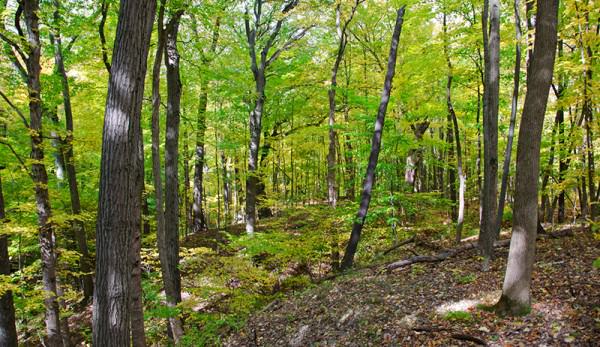
I’m looking at a property with woodland acreage. What types of income could I potentially derive from this section of property?
You might see green in those tree leaves, but that doesn’t mean it necessarily translates to cash in the bank—at least not quickly. For advice, I turned to Ann Larkin Hansen, co-author of A Landowner’s Guide to Managing Your Woods (Storey Publishing, 2011), who lives with her husband on 250 acres of farmland and woodland in northwestern Wisconsin.
“While there isn’t a definitive minimum acreage for deriving income from woodlands, when looking for a property, keep size in mind,” Hansen says. “Most serious income generation from woodlands managed for harvesting comes from properties with several hundred acres, but if there are small-scale loggers and mills in the area, you may still be able to make some occasional cash from timber sales on smaller acreages.”
To help you assess woodland for income, think about the two key income categories:
Timber
Timber income involves harvesting specific trees from your acreage to sell to businesses, such as lumber mills.
“The reality is timber income is occasional and adds up to much less than people expect, so definitely don’t rely on it to pay your property taxes every year,” Hansen says. “Even with a good stand of woods, remember you will only be able to selectively harvest every five to 15 years anyway.”
Wood only has value if you’re close to a market of willing buyers. Marketing will be a challenge if your property is geographically remote or hard to access with harvesting equipment. Active management, such as pruning and thinning, can considerably increase the value of your timber, though it takes years to see results.
It’s important to engage a local forester familiar with trees in your area, as types of trees vary geographically. The West Coast has more softwoods, while hardwoods are more predominant in Appalachian areas. Healthy hardwoods—those that are straight, have a large diameter, and have few or no lower branches that make knots in the wood—are generally very valuable as timber. Lower-quality hardwoods are typically crooked, stunted, or insect- or disease-infested. In Hansen’s area of Wisconsin, many aspens and white pines are sold to the paper-manufacturing industry as pulp.
Check with your state’s natural-resources department or the USDA’s Natural Resources Conservation Service for programs that will connect you to a forester free of charge. You can also hire private foresters as consultants to offer you a quick assessment prior to purchase.
Nontimber
“Nontimber income refers to a variety of other means [by which] you could earn income off your woodland, such as selling firewood, woods-grown shiitake mushrooms, or specialty woods for woodworkers and crafters,” Hansen says.
Diamond willow, for example, is popular among wood-carvers and furniture makers for its unusual, irregular diamond-shaped segments with varying contrasting colors.
“These types of nontimber income streams are very localized and not well-organized,” Hansen says. “You’ll need to self-market and see if there are folks in your area looking for what you have.”
Aside from income generation, factor in how your woodland property can save you money. If you heat with wood and can prepare timber for firewood, it can add up to big savings on fuel costs.
“If you are serious about any form of timber income, you need to get a professional forester involved to ascertain if your trees can be used in harvesting and help you create an overall woodland-management plan,” Hansen says.
States also offer various property-tax relief programs for woodland owners; your state’s department of natural resources or NRCS office will also have information on these.
Here in Wisconsin, we participate in our state’s Managed Forest Law. This is a contract between the landowners and the state that includes financial rewards for conservation practices. It requires us to manage “Timber Stand Improvements” on our property, which involved bringing a state forester to our property to create a tree growth-and-clearing plan. This process entailed learning about tree identification and chain-saw use and logging several hot, sweaty hours outdoors. These are conservation practices we would be doing regardless, but it’s nice to have guidance from a forester and some financial support.
This article originally appeared in the May/June 2013 issue of Hobby Farms.




